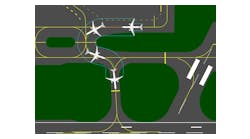Exposure to environmental noise is one of the leading causes of hearing loss throughout the world, with approximately 30 million workers exposed to hazardous levels of noise on the job. Every day we are flooded with transport, industrial and recreational noises. This constant exposure wears down the delicate nerve hairs in the inner ear in the same way bristles on a toothbrush wear down over time.
That damage is irreparable. When it comes to hearing, once it’s gone, it’s gone. So how can we protect our hearing and preserve it, regardless of environmental noise?
To best understand what damaging noise is, we need to talk about decibels (dB), or the way we measure sound intensity. On one end, 0 dB is barely audible sound. A normal conversation hovers around 55-65 dB. From there, we move into the higher — and more dangerous — ranges.
Highway traffic typically measures at around 75 dB, while something as simple as a hairdryer accounts for 85 dB. A lawnmower garners 95 dB. Construction sites, as you can imagine, often creep up over 100dB on a regular basis. Jet engines — the most consistent source of environmental noise for airport workers — frequently register at 140 decibels.
How loud is too loud? Anyone exposed to levels at or over 85 dB, particularly on a regular basis or over a prolonged period of time, is at a high risk of hearing loss. Without proper hearing protection, running a chainsaw for just 15 minutes can cause permanent damage. Obviously, consistent exposure to the noise produced by jet engines on a daily basis puts airport workers in serious jeopardy of hearing loss.
Considering over 10 million Americans suffer from noise-related permanent hearing loss, this is a problem that demands attention, not to mention more preventative measures.
The FAA has been trying to improve noise control for decades, and continues to develop quieter aircraft and enhanced flight control measures. Someday, there may be jet engines that operate at the same decibel level as a car engine. Until then, however, airport employees must take more immediate steps to protect themselves.
Fortunately, the solution is not complicated. Hearing loss can be prevented by wearing good quality noise protection.
If you are an airport worker exposed to hazardous levels of noise on the job, hearing loss is likely already happening. While you can’t always control the noise, you can control how you protect yourself. Protective ear buds or earmuffs that provide adequate Noise Reduction Rating (NRR) can block out a significant percentage of damaging noise.
When shopping for hearing protection, be sure to look for audiologist-recommended products. The best hearing loss prevention products will protect against hearing loss, tinnitus, and the daily stress of excessive noise by dampening loud vibrations before they can damage your hearing. By blocking out such a large amount of environmental noise, using earbuds or ear muffs allow you to keep music and conversations to safe, hearing-preserving level.
We’ve all heard the old adage that an ounce of prevention is worth a pound of cure. One place where that is certainly the case is with hearing protection. Don’t take your hearing for granted; keep it protected and safe for years to come.
Tom Buske is a leading brand management professional for ToughTested, a subsidiary of Mizco, International. As VP of Branding and Strategy, Buske leads the marketing and brand development for the rugged brand, assisting with new products, marketing initiatives, and competitor research.

